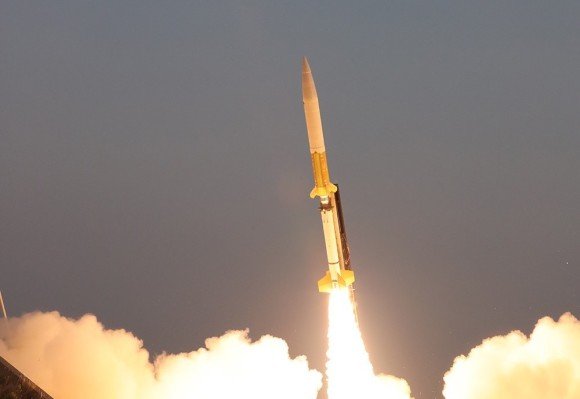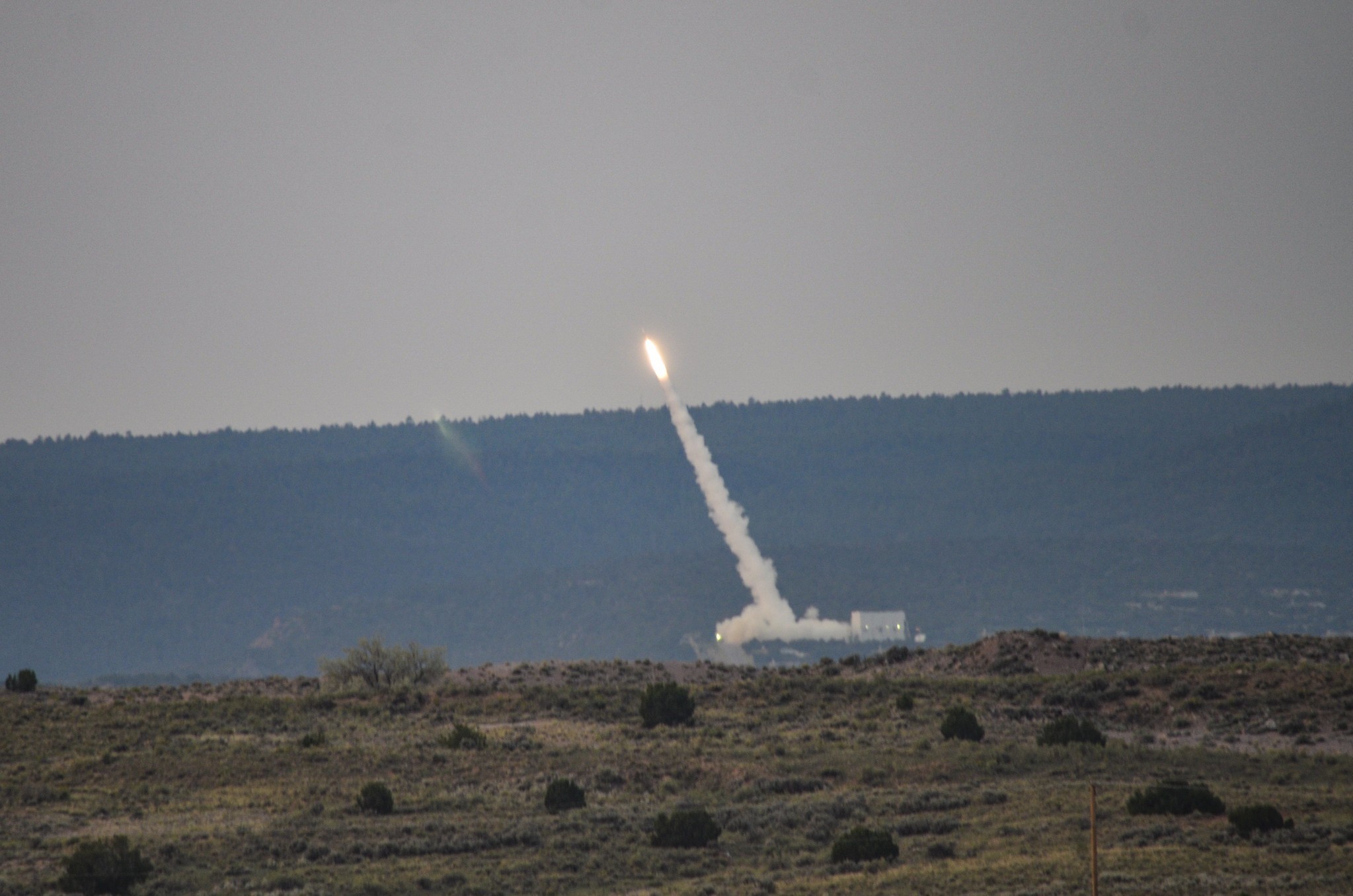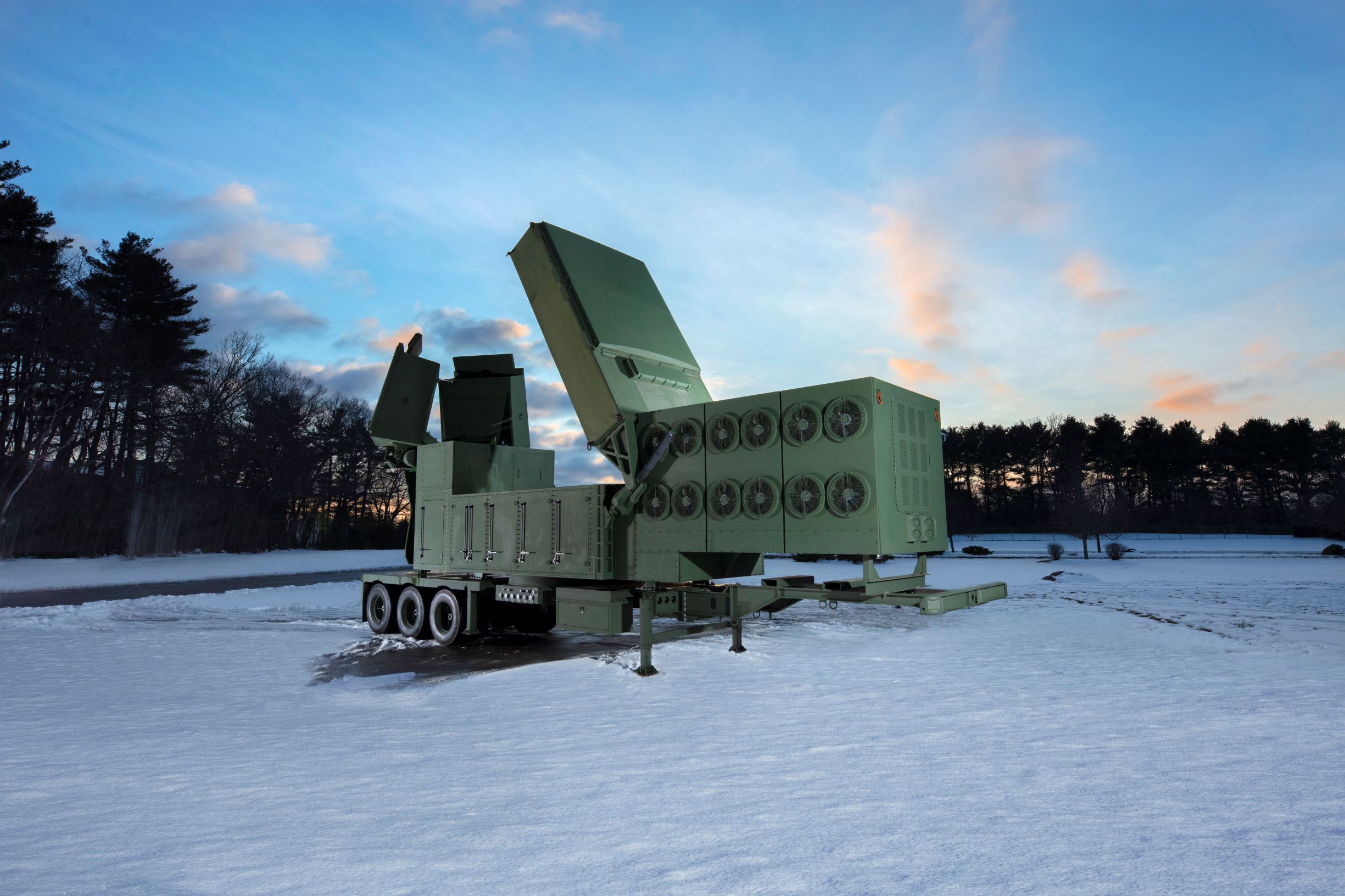IBCS in Production Phase. More Tests Soon

The US Department of Defense recently decided on the launch of production of the Integrated Air and Missile Defense Battle Command System IBCS. It should reach initial operational capability next year and will be simultaneously tested and developed.
The decision to move the Air Defense Battle Command System IBCS to the production stage (Milestone C), taken in the first half of January, was preceded by a series of tests with the participation of U.S. Army soldiers. Currently, further tests in a near-operational environment are planned in parallel with production. The IBCS will also be integrated with more sensors and effectors.
The path to Milestone C
The last stage before Milestone C was Limited User Testing which was required for the IBCS to be deemed ready to pass from the Engineering and Manufacturing Development phase to Production and Deployment – P&D. Their scope was relatively broad and they were conducted by the U.S. Army 3-43 Air Defense Artillery battalion – the first unit that will be equipped with the system. The assumption of the Limited User Test was the delivery of the system for a complete unit (battalion) followed by tests in contested environment conditions. The test was to verify the ‘maturity” of the system and its suitability for the military before entering into service. Incidentally, this the second LUT that the IBCS is going through. The first one, performed back in 2016, did not meet the objectives and the system had to be modified. Since then, however, work has proceeded as planned after the IBCS schedule was redefined in 2017. This was confirmed by tests in 2019, including flight tests conducted before the Limited User Test.
In the IBCS development process an important role is played by the new method of software development – the so called Agile Software development. It allows subsequent modifications of the system to be introduced at short intervals, and the software itself - improved on an ongoing basis depending on the needs. Its development is supervised by teams consisting of both the producer's representatives and soldiers, and the work is constantly taking into account the feedback from users. Agile software is what was used during LUT testing.
The methodology will also be applied in the further development of the system. It is also important from Poland's point of view. Let us remember that, apart from the two IBCS/Patriot batteries as part of the first stage of the Wisła program, Poland also acquired updates of the software for the entire Wisła system (eight batteries) until mid-2026. The modifications that are likely to occur by that time will therefore be under the current contracts.
The tests
But let us return to the Limited User Test. The coronavirus pandemic proved to be a challenge for the test cycle organizers. That is why they began in July, and not - as originally planned - in May 2020. During the activities on the shooting range, extensive measures to prevent the spread of the virus were of course put in place. This is important because it is not always possible to maintain social distancing during exercises, even if part of the participants (military and industry experts, for instance) were placed in different locations, including outside of the exercise grounds.
As described in Breaking Defense, the soldiers of the 3-43 battalion alone constitute about 500 military personnel, and a total of more than 700 people participated in the tests on the firing range. The soldiers had at their disposal, among others, six Engagement Operations Centers (EOC) - just like in the standard structure of the U.S. Army Air and Missile Defense Battalion, as well as Patriot and Sentinel radars (providing at least partial coverage of the former's "blind spots") and, finally, effectors: Patriot missile launchers with PAC-3 MSE missiles, but also with older PAC-3 CRI and PAC-2 GEM-T.
The IBCS configuration during the LUT was therefore very similar to the one the U.S. Army will receive when the system enters into service. The integration of all available effectors gives some degree of planning and engagement flexibility (for instance there is no need to use PAC-3 MSE missiles against cruise missiles, which can be intercepted by CRI missiles). After fielding in 2022, the configuration of the Integrated Air Defense System with the IBCS will be supplemented by additional elements.

The U.S. Army decided that the Limited User Test would consist of four elements. The first one was an exercise involving air and missile defense systems, as well as actual and electronically simulated air targets on the firing range (American F-16s took part in the operations, among others). It is within the framework of these exercises (so called Live Air) that the operation of the system was tested in various scenarios, including deployment and fighting air targets, but also maintaining communications, changing positions, generating a recognized air picture, integration with other systems (using Link 16), protection against enemy countermeasures, including electronic jamming and cyber attacks.
The second part of the Limited User Test is flight testing with the use of missiles. Two such tests were conducted in August 2020. The first examined the capability to simultaneously engage low-flying targets. Soldiers from the U.S. Army's 3-43rd Battalion had Patriot and Sentinel radars, three Patriot missile launchers, one battalion-level Engagement Operations Center and two battery-level EOCs along with an IFCN communications network. By fusing data from various radars through the IBCS, the two cruise missile surrogate threats were tracked and then intercepted by Patriot PAC-3 missiles.
A slightly different scenario was executed during the second test. The possibility of simultaneous engagement of a ballistic and cruise missile target was demonstrated. This time soldiers had at their disposal two battery-level EOCs and one battalion EOC, as well as two Patriot and Sentinel radars and four missile launchers with PAC-3 MSE, PAC-3 CRI and PAC-2 GEM-T missiles - all connected via the IFCN network.
Radars tracked both targets and the IBCS system produced engagement solutions. The cruise missile target was shot down with a PAC-2 GEM-T missile, while the ballistic target was shot down with a PAC-3 CRI missile. IBCS planned two shots against the TBM per the settings defined by the war fighters. The first planned shot, a PAC-3 MSE, malfunctioned and did not launch. According to preliminary information, the missile malfunction was unrelated to the operation of IBCS. The second missile, a PAC-3 CRI, launched as planned and intercepted the target.
The third element of the IBCS Limited User Test was "distributed hardware in the loop" testing, during which individual components were subjected to laboratory tests simulating the extreme conditions assumed for its operation. Finally, the fourth element was Cyber Testing - tests of resistance to a cyber attack. They were conducted both at the testing ground and in the laboratory. This type of testing was particularly important due to the need to secure the operation of the system in the network.
The tests were successfully completed in September 2020. Their results confirmed the main assumptions and allowed a decision to enter the production phase (Milestone C) in the first half of January 2021. Currently, the U.S. Army and Northrop Grumman - in parallel with the production of the system - are working to further improve the IBCS system. In turn, the Department of Defense is preparing to sign a Low-Rate Initial Production (LRIP) contract for the IBCS system.
The successful Limited User Test (LUT) and Milestone C decision are both significant accomplishments for the U.S. Army and for Northrop Grumman as the Army’s prime contractor and partner in IBCS’s development. The LUT confirmed both that the IBCS program is on track for meeting development requirements and that the system capable of defeating the range of threats that U.S. and Allied forces face today and into the future. The Milestone C decision enables IBCS to enter into Low Rate Initial Production later this year and it reflects confidence by the U.S. Department of Defense and the U.S. Army that the program is on track toward completing development and initial fielding.
What’s next?
Currently, the IBCS system is facing another round of testing. It will be conducted on equipment of a standard representative for low-rate production, i.e., including minor modifications that will be needed after Limited User Test. We're talking about what's called Initial Operational Testing and Evaluation - tests conducted under near-operational conditions, conducted like the LUT by soldiers and scheduled for 2021.
The Initial Operational Test and Evaluation (IOTE) is a comprehensive test of IBCS system performance conducted under realistic operational conditions toward determining if the system is effective and suitable for employment. The IOTE informs a Department of Defense and U.S. Army “Beyond Low Rate Initial Production” decision. The IOTE will be structured and executed in a very similar manner as the LUT and will encompass distributed HWIL testing, sustained field operations, flight testing, and cyber testing. A focus of the IOTE will be testing to verify performance improvements against shortcomings identified during the 2020 LUT.
Once IOT&E is complete, IBCS will be able to move into Full-Rate Production (FRP). Once FRP begins, IBCS will be able to be traded overseas under standard Foreign Military Sales, without the need to apply for the “Yockey Waiver” procedure that Poland obtained.
Concurrent with the IOT&E tests will be preparations for IBCS to achieve Initial Operational Capability (IOC) status, which is planned for the U.S. Army for 2022. Data from IOT&E may be considered to some extent in deciding whether to declare initial operational capability, but there is no requirement that this test cycle will need to be completed before IOC status is achieved. This is a standard rule used in the U.S. weapons acquisition system. For example, the F-35 fighter still has not completed IOT&E testing and yet it is not only considered operational, but is in combat use. Of course, as in any case for IOC, in addition to having operational equipment it is also necessary to have properly trained personnel, a logistics assurance system and operating procedures.
Over the course of the current and next year, soldiers of the 3-43rd Patriot Battalion, as that unit has been designated for refitting, will enhance their use of IBCS in order to be ready for deployment in operations in the second half of next year. The 3-43rd Battalion will also be the first unit to receive the new LTAMDS 360 degree radars, developed by Raytheon and designed to be compatible with the IBCS.

Ultimately, the U.S. Army intends to equip all air defense units with the IBCS, including the SHORAD units and those equipped with the THAAD system. The integration will be implemented gradually and for a certain time units assigned to protect maneuvering ground force troops (M-SHORAD) will remain with the current FAAD C2 system, which will be integrated by IBCS in the future. It is also IBCS that can contribute to the Joint All Domain Command and Control (JADC2) system.
While the U.S. Department of Defense strategy and approach for JADC2 is still in development, the Army recognizes that IBCS can be its contribution to achieving the larger JADC2 vision for the Department. IBCS is built on a network enabled, Modular Open Systems Approach (MOSA) architecture that affords the level of weapon system, sensor, and C2 integration, across multiple domains, that is envisioned for JADC2
Therefore, once production begins, integration of the IBCS with further elements used or envisaged for use by U.S. ground forces, but also by other types of U.S. armed forces may be expected. As for the U.S. Army, a "shoot-off" test of missiles proposed for the IFPC Inc-2I program, i.e., the short-range air defense system SHORAD / C-RAM class of the U.S. ground forces, designed for using the IBCS system, is planned for 2021. The sensors for the system will be Sentinel V3 and V4 radars, also integrated with the system.
It will be an open competition, and one of the participants will be Rafael, partnering with Raytheon to offer a modified version of the Iron Dome system. As Breaking Defense reported earlier this year, a plan has already been developed to integrate the modified Iron Dome into the IBCS. There is no information on other participants in the program at this time. However, all bidders will be required to demonstrate the ability to integrate their solutions with the IBCS.
Czytaj też: Northrop Grumman: A Payload Approach for IBCS in Narew SHORAD Enhances Polish Industry Participation
It is also likely that in addition to integrating more U.S. Army air defense elements into IBCS, other components will also be linked to this system. Since 2019, tests have been conducted to investigate the possibility of transferring data from F-35 fighters to the IBCS system, and in the course of these tests, Northrop Grumman claims to have obtained information with enough accuracy to guide anti-aircraft missile fire - IBCS integration with the F-35 fighter, and its capability to leverage the F-35’s on board sensors to contribute to development of a composite track and highly accurate Single Integrated Air Picture (SIAP), has been successfully demonstrated during IBCS flight testing in 2019. This level of multi-domain integration with the F-35, is indicative of the capacity of IBCS’s networked system architecture to be a major component a broader JADC2 architecture encompassing command and control and battle management systems from across the Services - Bill Lamb, director of the Multi-Domain Mission Command unit at Northrop Grumman, told Defence24.pl.
Other U.S. military services are also seeking to build their capabilities on the JADC2 system. For example, the Air Force (USAF) has been testing the capabilities of ground-based air defense systems as part of trials of its ABMS battle management system. One ABMS test conducted in August/September 2020 involved NASAMS launchers and Sentinel radars normally assigned to the U.S. Army, and a 155 mm howitzer fired an HVP-class hypersonic missile that was used to shoot down a target with cruise missile characteristics.
The adoption of this approach across the U.S. armed forces under JADC2 means that ground forces will also seek to acquire capabilities by combining existing systems they have or systems that are operated by other forces. IBCS, as a modular-architecture system being deployed to the U.S. Army and designed to connect various types of sensors and effectors, can play an important role in linking these elements, even beyond integrated air and missile defense.
Article prepared in association with Northrop Grumman

WIDEO: Defence24 Days 2025: Premier Defence & Security Conference in CEE